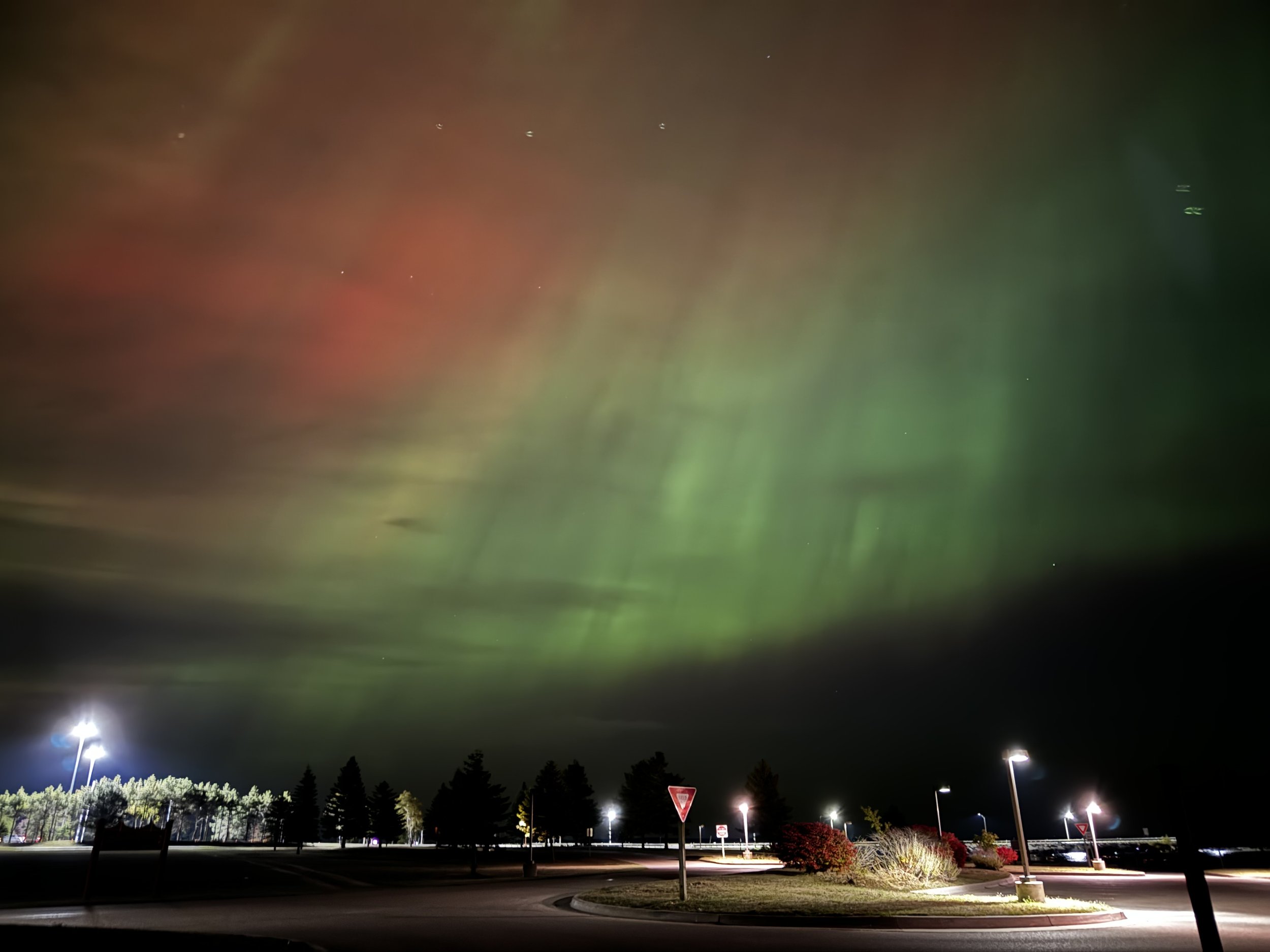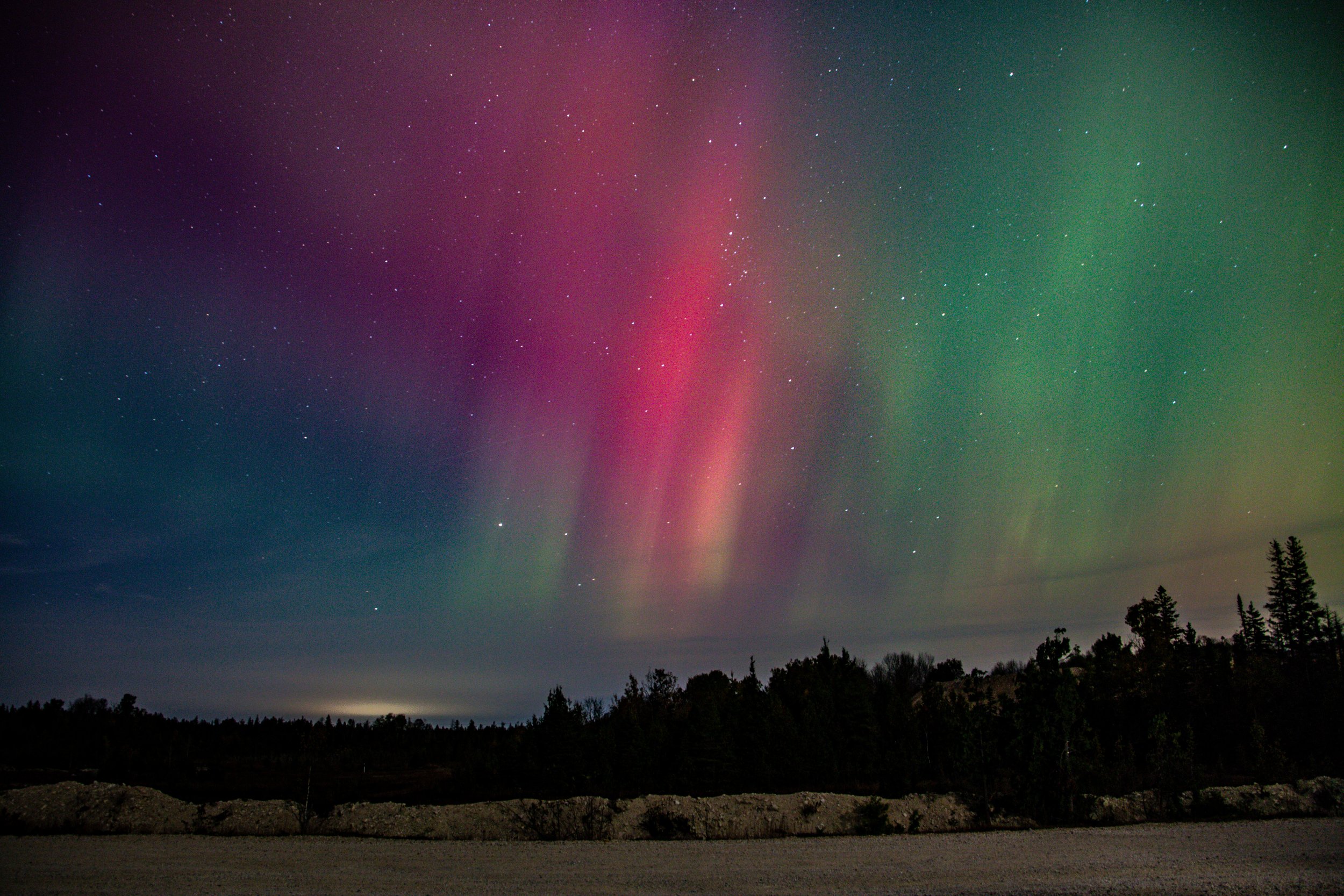Chasing the Aurora: A Journey into the Magic of the Northern Lights
There’s a notable difference between capturing photos with an iPhone and using a dedicated camera, especially when photographing the northern lights. The following images, both taken in Saint Ignace, Michigan, compare shots captured with the iPhone 15 Pro and a Canon 70D mounted on a Vanguard tripod with a Tamron 18-270mm lens.
Fun Fact: The northern lights, or aurora borealis, occur when charged particles from the sun collide with Earth's atmosphere, creating vibrant displays of light. Michigan’s Upper Peninsula, with its low light pollution and expansive dark skies, is one of the best places in the U.S. to chase this natural phenomenon. Saint Ignace, located near the Straits of Mackinac, offers breathtaking views of the aurora when conditions are right!
©Declan Harper Photography
The above image was captured at Bridge View Park in Saint Ignace, Michigan, using the iPhone 15 Pro. Despite being handheld, the phone delivered an impressive shot of the northern lights, showcasing how accessible aurora photography can be. To predict the northern lights, apps such as Aurora Pro and Aurora Alerts (exclusive to iPhone) were used, making planning easier for enthusiasts. The camera settings for this shot were ISO 2500, f/1.78, a 3.4-second shutter, and a focal length of 24mm.
©Declan Harper Photography
The second image was taken at Castle Rock in Saint Ignace, Michigan, and truly highlights the difference between using a dedicated camera on a tripod and an iPhone. While both images capture remarkable detail, the second image is noticeably crisper, with less noise and no visible movement. The camera setup used was a Canon 70D with a Tamron 18-270mm lens, with settings of ISO 500, f/3.5, a 30-second shutter, and a focal length of 18mm, all supported by a Vanguard tripod.
Fun Fact: Michigan's Upper Peninsula is one of the best places in the U.S. to view the northern lights due to its clear skies and minimal light pollution. The aurora borealis is most commonly visible during winter months, particularly when solar activity is high, making it a prime location for aurora chasers!

